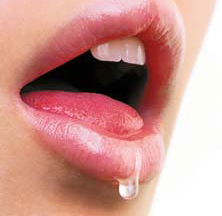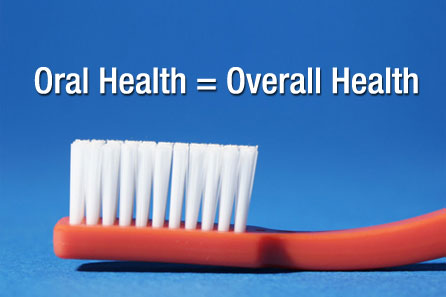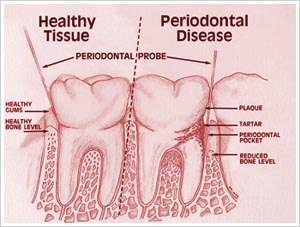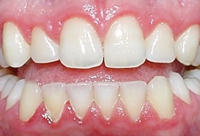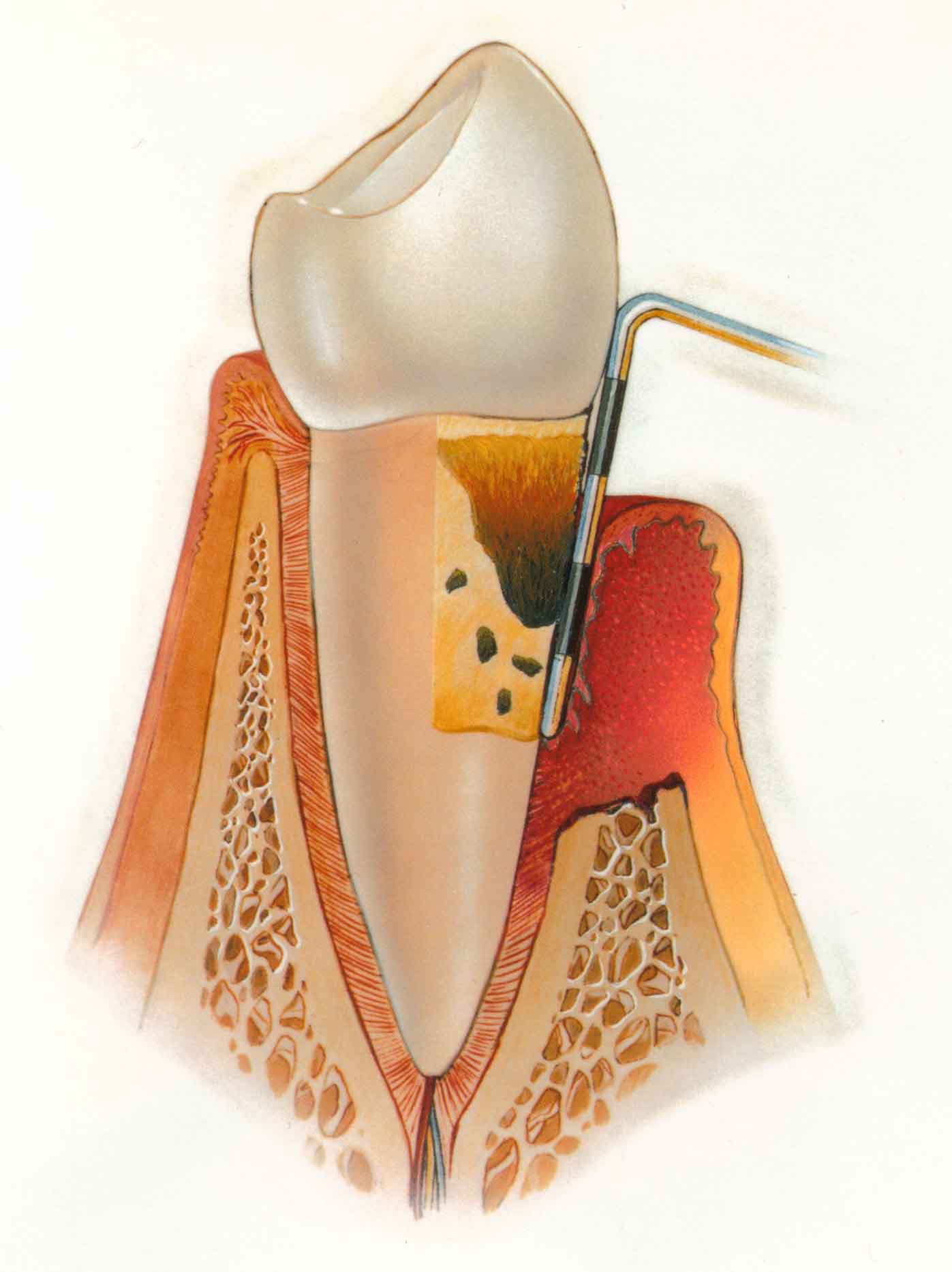
A gingival pocket formation can be seen
A Quick history on Periodontal Disease
What causes periodontal gum disease ? Our mouths are full of bacteria. These bacteria, along with mucus and other particles, constantly form a sticky, colorless plaque on teeth. Brushing and flossing help get rid of plaque. Plaque that is not removed can harden and form calculus that brushing does not clean. Only a professional cleaning by a dentist or dental hygienist can remove the calculus as it is very hard like pieces of rocks.
The longer plaque and calculus are on teeth, the more harmful they become. The bacteria causes inflammation of the gums leading to gingivitis. In gingivitis, the gums become red, swollen and can bleed easily. Gingivitis is a mild form of gum disease that can usually be reversed with daily brushing and flossing, and regular cleaning by a dentist or dental hygienist. This form of gum disease does not include any loss of jaw bone and tissue that hold teeth in place. Continue reading →



